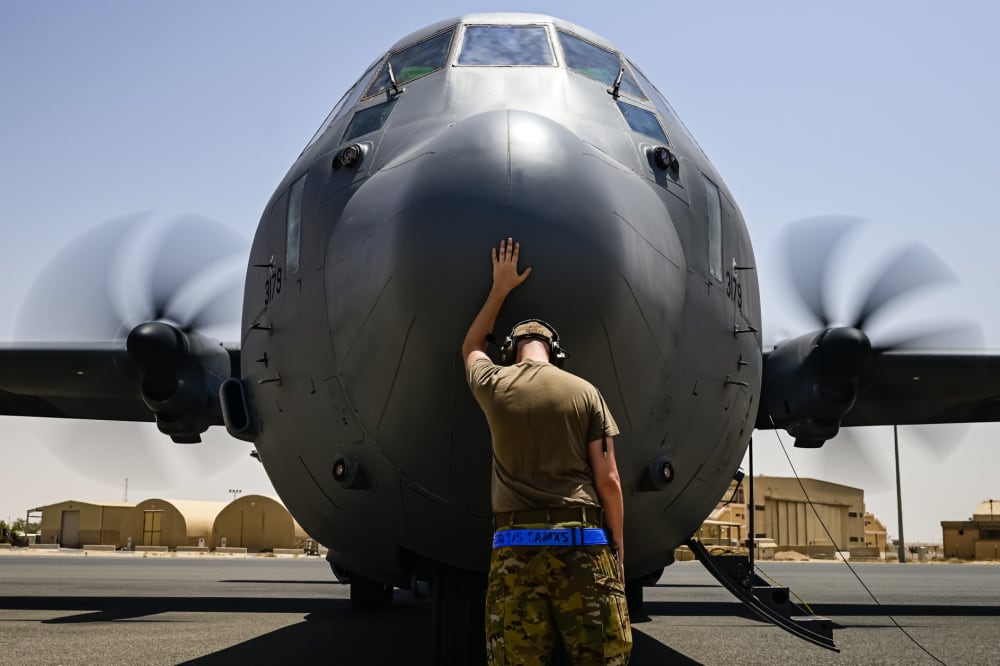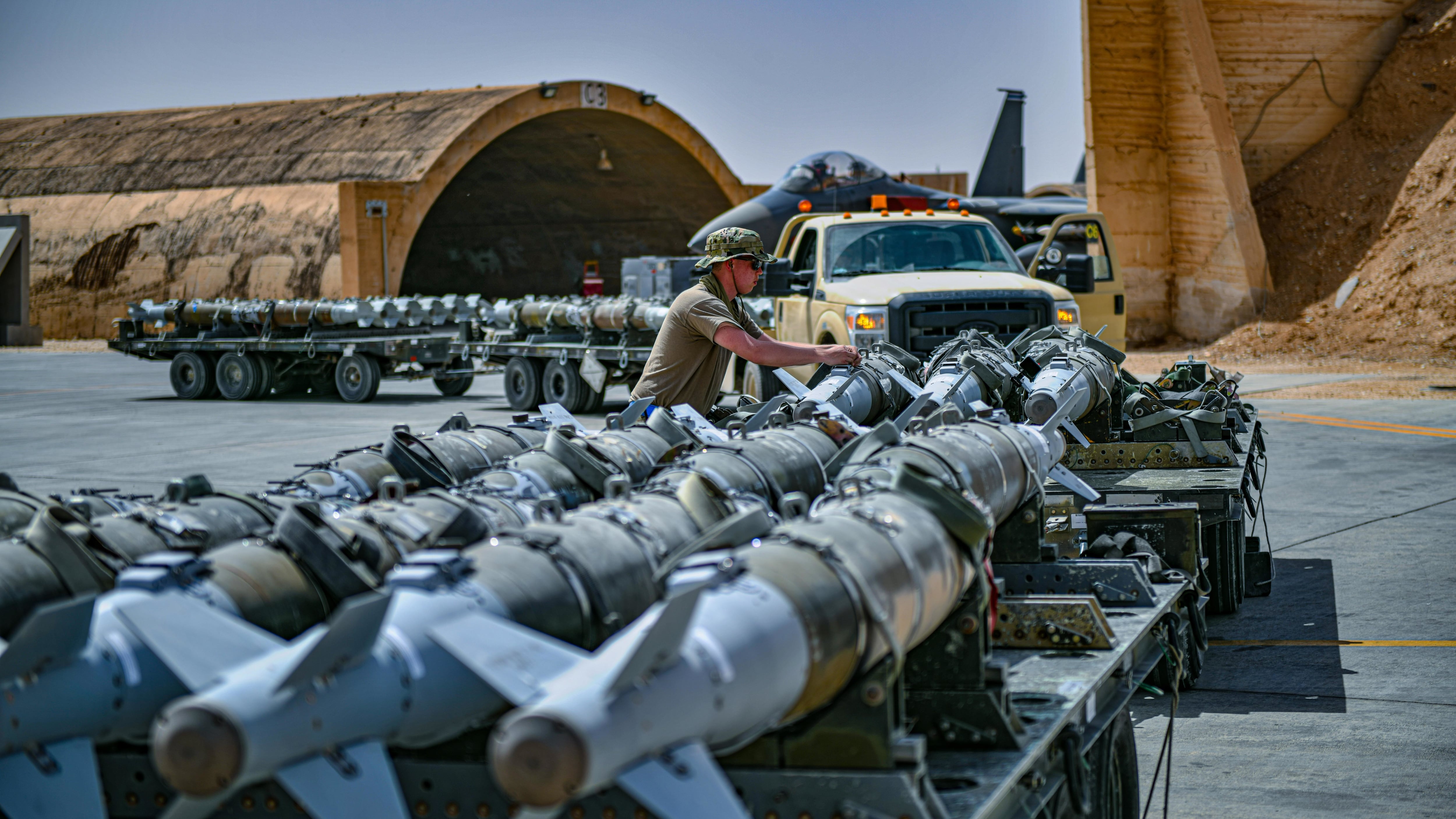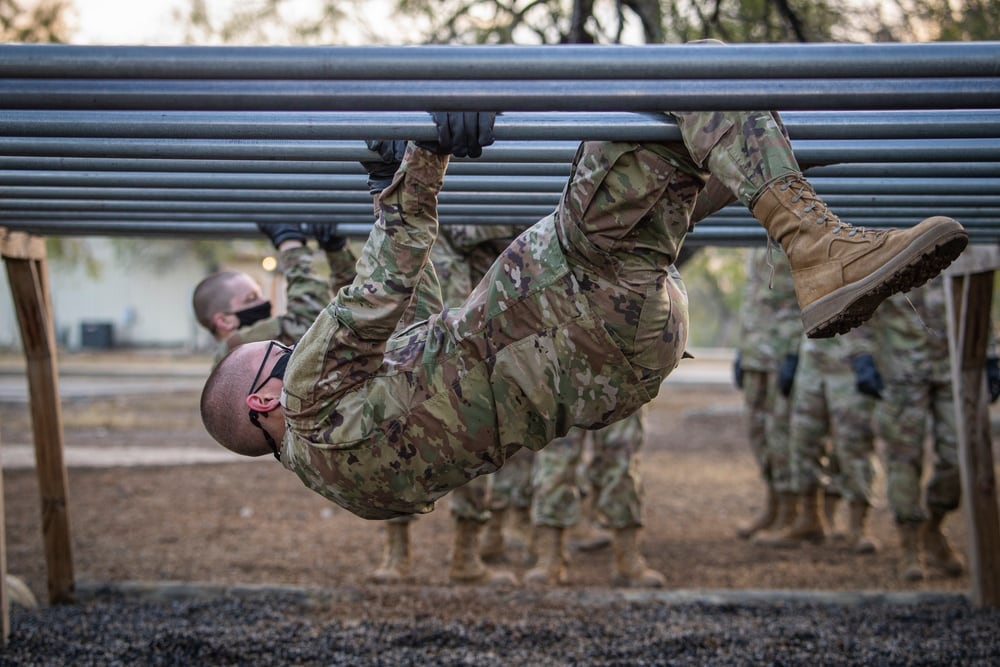Air Force boot camp is saying goodbye to “The Beast.”
Since 2006, incoming airmen and Space Force guardians have gotten their first taste of deployed life during a stretch of basic military training dubbed “BEAST Week.”
The four-day Basic Expeditionary Airman Skills Training exercise sent trainees out of the classroom to practice basic skills they might need overseas, from surviving a chemical attack to disposing of bombs. That curriculum was largely designed to prepare troops for the counterterrorism fight that dominated U.S. military operations for the past two decades.
RELATED
But times are changing.
Now, the Air Force and Space Force want to train their newest recruits for a spur-of-the-moment fight that requires troops to think on their feet.
The new “PACER FORGE” exercise is a faster-paced mock deployment that lasts two days rather than four. It aims to simulate a rapid response to an urgent threat without the usual facilities or supplies at the ready.
Instead of asking trainees to set up a makeshift base from which they could launch air operations, the Air Force’s 37th Training Wing has shifted the exercise “more toward that ‘multicapable airman’ mindset,” Lt. Gen. Brian Robinson, head of Air Education and Training Command, told reporters in September.
That means that rather than dispatching larger groups of airmen who each have their own particular skill, the exercise will teach airmen how to work in smaller teams where skills overlap.
It also illustrates the opportunities and challenges ahead for a force that is short-staffed and recovering from decades at war.
RELATED

The curriculum focuses on launching missions, battlefield command and control, and base support, the service said. It also pushes instructors to be mentors and facilitators, rather than telling younger airmen what to do, and offers opportunities to practice skills like combat medicine and handling weapons.
“They will be put to the test with scenarios that are built to provide flexibility, promote information-seeking, teamwork [and] decision-making, and are results-focused,” the Air Force said in a release.
While the Air Force has marketed “The Beast” as basic training’s “most intense” week, promising “field training and … combat scenarios with fellow trainees at your side,” Robinson said the updated version won’t necessarily be easier.
“We don’t rest on our laurels,” he said. “We are always looking for different ways to train.”
RELATED

The changes dovetail with other updates to how airmen handle the runup to a combat deployment.
Instead of squeezing pre-deployment training into the final month at home, squadrons are trying to spread those lessons across the 18 months before they leave. It’s part of an effort to give airmen enough time to rest between deployments, and to prepare both people and planes for another round.
“What we are doing is making [trainees] ready to join any team, to work well together, to solve tough problems, to be good wingmen and teammates and to innovate,” 737th Training Group commander Col. Jeff Pixley said in a release. “Early feedback suggests we are absolutely on the right track.”
Rachel Cohen is the editor of Air Force Times. She joined the publication as its senior reporter in March 2021. Her work has appeared in the Washington Post, the Frederick News-Post (Md.), Air and Space Forces Magazine, Inside Defense, Inside Health Policy and elsewhere.




